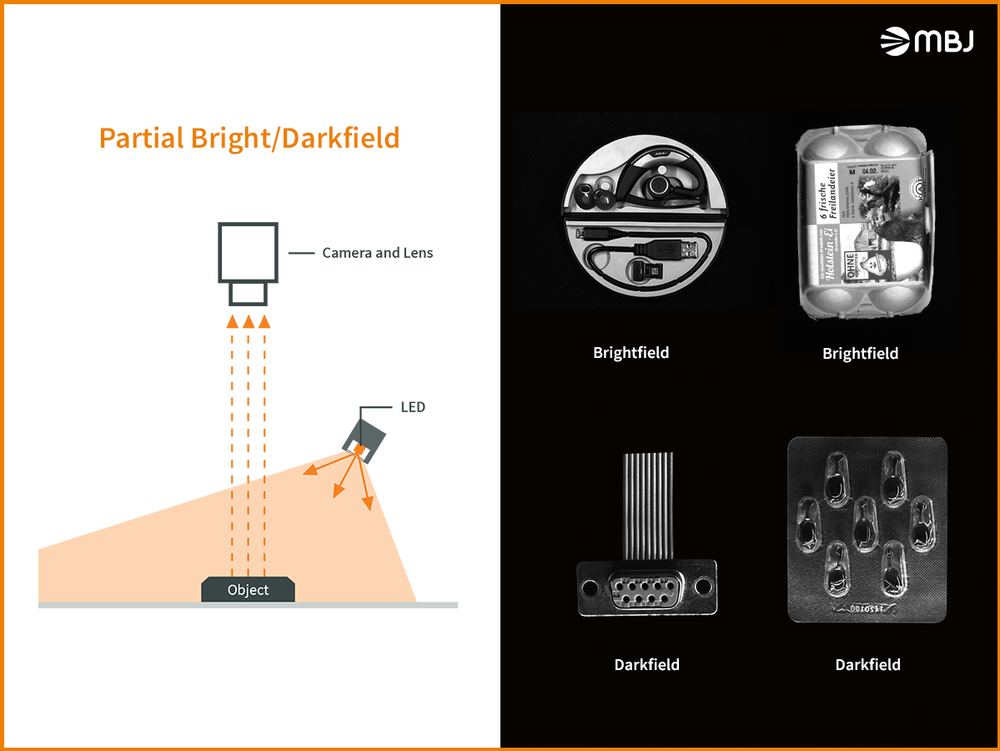Illumination angles
Different illumination angles create varying images of the object in the camera and thus highlight different object properties. In this way, different inspection tasks can be covered with a variation in angles.
We speak of toplighting when the illumination is above the object plane, in front of the object. We speak of backlighting when the illumination is below the object plane, behind or below the object.
These two areas can be further subdivided:
- in brightfield illumination
- in partial bright- or darkfield illumination
- in darkfield illumination
The decisive factor for the choice of illumination angle is the property of an object to be inspected.
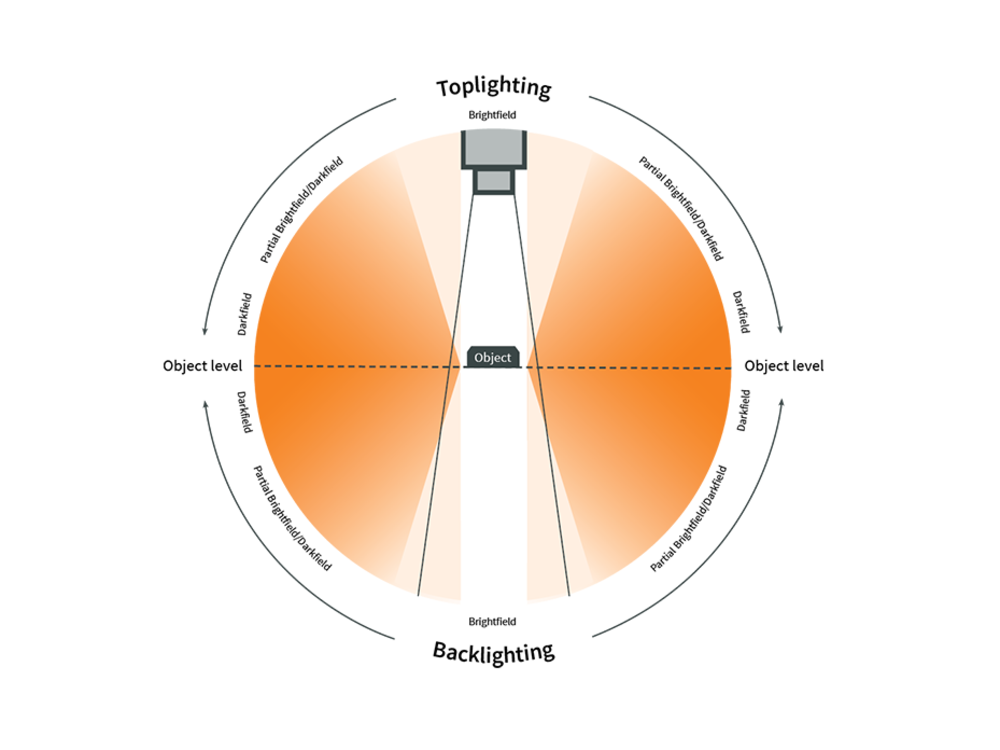
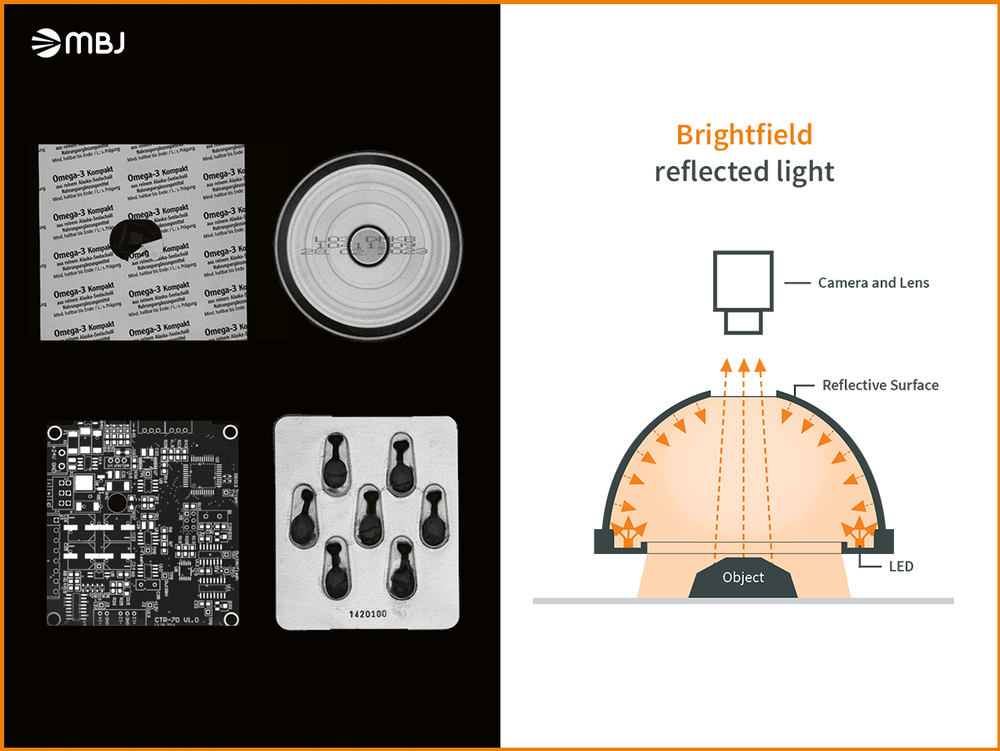
Brightfield illumination - Toplights
The brightfield incident illumination is placed above the object close to the camera.
With this type of illumination, the light is reflected back directly into the camera via the object. This can be used for uniform illumination of an object space.
If the object changes the light, e.g. by surfaces inclined away from the light, not all the light from these surfaces is reflected back into the camera. This is used to visualize changes caused by flaws in the object.
MBJ offers the following brightfield toplight illuminations:
Top lights Ring lights
For special brightfield tasks:
Brightfield illumination - Backlight
Brightfield transmission illumination is used as homogeneous diffuse area illumination behind or below an object.
With this type of illumination, the camera looks directly at the illuminating surface of the light, hence the image background is bright. The object, between the illumination and the camera, creates a partial or even a complete shadowing of the light in the camera. It appears very dark in the image.
- Object outlines and recesses are displayed in high contrast.
- Transparent objects produce, depending on material thickness and type, different brightness in the camera image
MBJ offers the following brightfield backlight illuminations:
Backlights
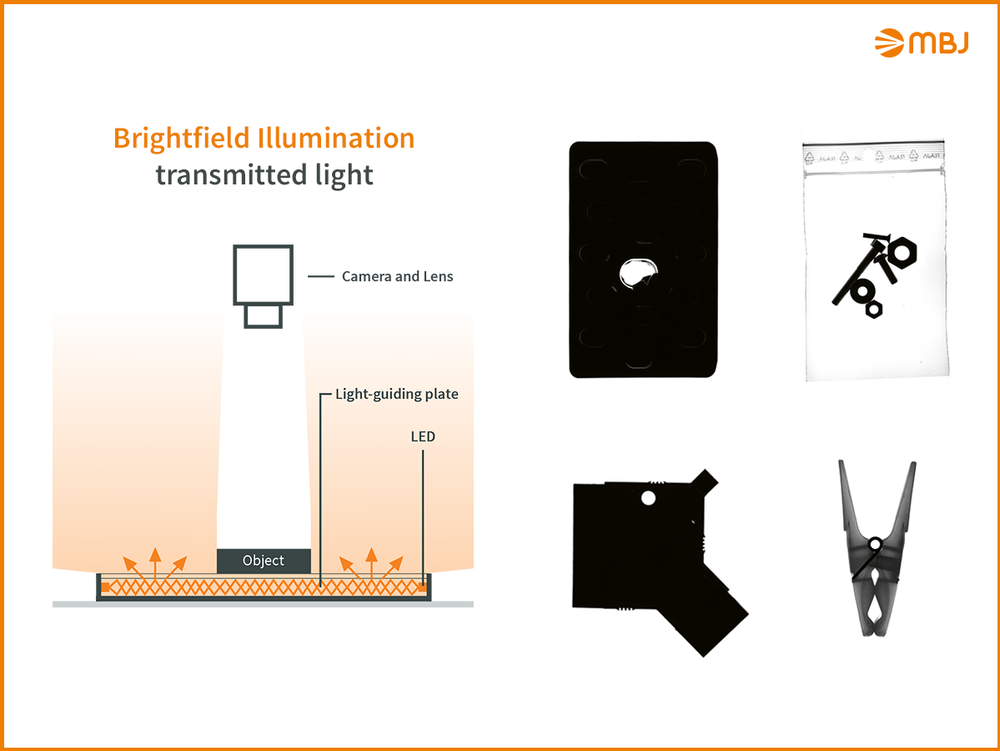
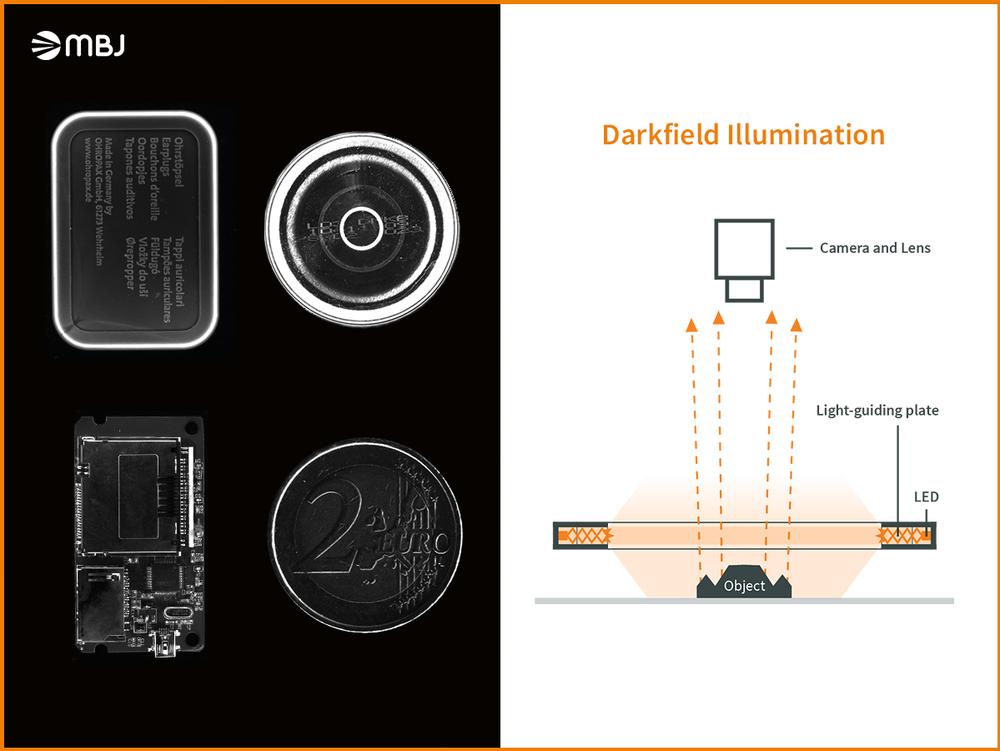
Darkfield illumination
Darkfield illumination can be setup as incident or as transmitted illumination.
For this setup, the light from a light source is positioned in a way that the light is not reflected back from the object into the camera's lens.
Thus, the object and the background appear dark in the image. Only areas of the object that are at a certain angle to the camera reflect light back to the camera. They are displayed brightly and highlighted, e.g. raised edges, surface scratches.
Darkfield illumination can be created with different light sources:
- using horizontal ringlights close above the object
- using narrow barlights at a shallow angle above/below the object
Partial brightfield or darkfield illumination
Illuminating the object at these angles combines the properties of the two previously mentioned types of illumination.
By changing the angle to a range between bright and dark field illumination, the light, via the object, is only partially reflected directly back to the camera.
Part of the light passes the camera lens and is only reflected back to the camera when the surface of the object changes it. At the same time, however, the special characteristics achieved by the strict application of bright or dark field are weakened.
Partial illumination can be used as both incident and transmitted illumination.
Partial illumination at a wide variety of angles can be achieved very well with beams. In this case, four beam illuminators are usually mounted around the object.
Narrow barlightsWide Barlights
It's even easier to set up a partial brightfield application using Angled Ringlights
